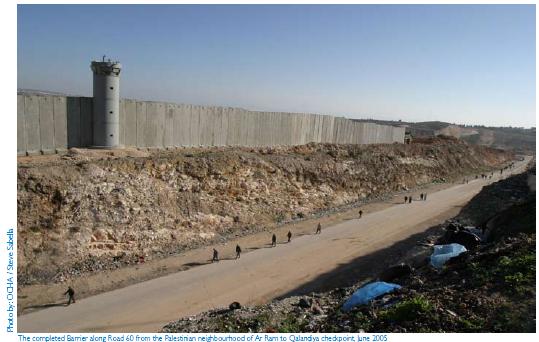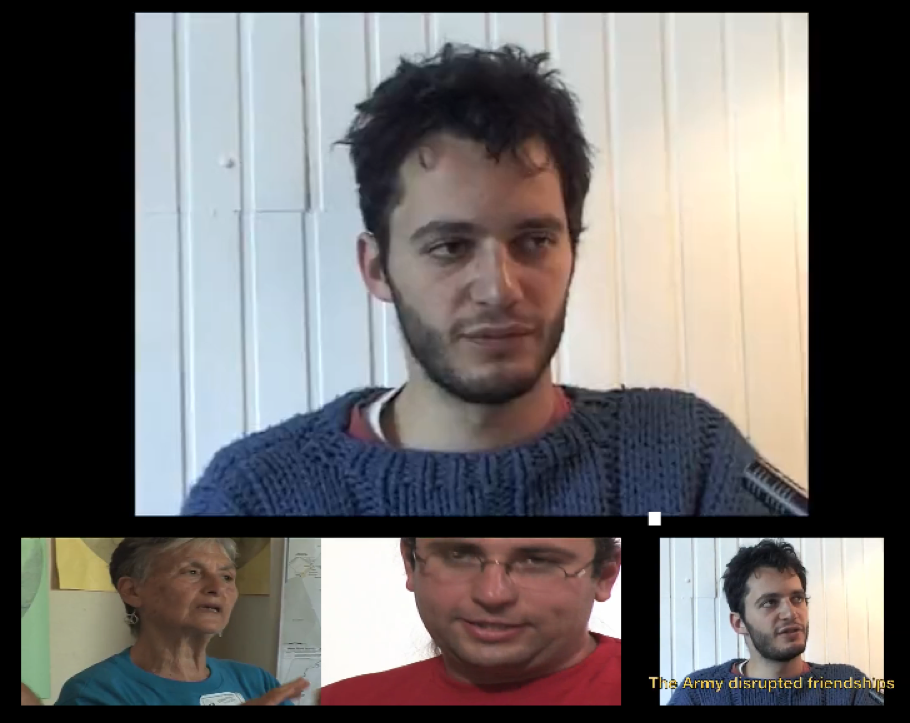The Only Democracy? » On The Ground Reports » “What Compels You to Do That?”: Teaching English As Activism in Hebron
“What Compels You to Do That?”: Teaching English As Activism in Hebron
By Rebecca Kirzner
I teach English in Hebron. There. It’s said. The seemingly innocuous statement that generates an onslaught of questions, quizzical looks, and widened eyes. To be fair, it’s the type of statement that one does not often hear from a nice Jewish girl from New Jersey, living in Jerusalem.
“What compels you to do that?”
The question always catches me off-guard. What doesn’t compel me to do that? I teach students whose depth of experience is only matched by their quest to learn. And as we go through each lesson, I feel that it is I who am the student, sitting at the feet of those who offer their wisdom and friendship unreservedly, despite my very different background. Who entrust me with personal accounts of their lives in occupied cities and villages, and with rational political views for which they could be jailed. Facing the deepest of tensions, the most stifling of conditions, their first impulse remains kindness, not suspicion. They walk upright in an increasingly crooked world, and offer their hospitality to me with pride and honor.
I travel every Thursday, using only Palestinian transportation. I leave from Jerusalem – a city which my students are prohibited from visiting. I take a bus, then a shared taxi, passing a few shekels to the driver, so that he can take me southward, alongside the wall, then past Palestinian villages and the settlements that cut through their land. Past a man on a donkey, soldiers hitchhiking home, signs pointing towards the Jewish neighborhoods of Efrat, Kiryat Arba, Be’ersheva. Fewer signs to Hebron, Dura, or Yatta, but then again, most cars on the road are Israeli anyway. It’s incredibly difficult for Palestinians to get around here.
We travel past Gush Etsion, a huge cluster of settlements with white single-family homes and red roofs, who comfortably watch the happenings in the West Bank from behind thick-paned windows. Then past the poverty of a refugee camp, more villages and towns, and a shockingly beautiful landscape of white rock and olive trees.
I arrive in Hebron. Yes, the Palestinian part. H1. In Arabic, Al-Khalil. Not the part whose Palestinian population has been all but completely driven out (See my previous post on Shuhada street). The Palestinian part, which is the largest city in the West Bank, and by far, the most tense.
Exhausting my limited Arabic vocabulary, I signal the driver to stop on busy Ayn Sarah (Sarah’s well) street. I have a few minutes to walk around the downtown area. I am the only woman in sight with my head uncovered, and although I have been careful to fully cover my body, my jeans make me stick out like a cowgirl in Paris. I attract some glances as I walk down the street: despite the presence of several international human rights organizations operating here, I am usually the only other “westerner” that I see all day. This apparently also occurs to the children that I pass, who shout “Hello! Welcome to Hebron!” as I walk.
Hebron/Al-Khalil is incredibly resilient. Despite decades of crushing suppression and violence in the city, the city is (generally) alive and vibrant. Once an example of how Jews and Muslims can live together in harmony, Hebron is now an example of the complete opposite. Only when I am in the Palestinian part of the city, watching people greet each and every person they see (and taking offense when the proper greeting is not said), do I see vestiges of the fact that the name of the city in both Hebrew and Arabic is derived from the word “friendship.”
My students study English so they can advance in their college entrance exams or in their engineering studies at Hebron Polytechnic University. They obligingly follow the lesson that I have prepared, but invariably the conversation turns to politics. In Hebron, talking about politics is a way of life. We talk about the Palestinian Authority, Hamas and Fatah – then we talk about the Israeli army, the Israeli government policies, Jerusalem, and the future of a Palestinian state. We can’t resist talking about the United States – they are interested to hear what the American media and public says about Palestinians and the Arab world – it’s a novelty to talk to me, an American who loudly denounces “Islamophobia” within my country. It’s world-changing for me to talk to them. They give me context for their experience, a context I would otherwise never have.
Activism in Palestine/Israel takes many forms. This part of the world plays hosts to a truly incredible number of protests, who serve their purpose by making the news and drawing attention to injustice and oppression. However, there are also activists who pick olives, teach art, set up after-school programs, work in clinics, train entrepreneurs, and otherwise improve the quality of life here.
I am so honored to teach English in Al-Khalil/Hebron, and even more honored to learn values, fortitude and strength from my students there.
For more on what I mean about the two parts of the city, here’s One minute in Hebron: lively, active “H1″ vs. Israeli-controlled ghost town “H2.”
Filed under: On The Ground Reports · Tags: Education, Hebron










 “You have a choice! Israeli Anti-Militarists Speak”
“You have a choice! Israeli Anti-Militarists Speak”